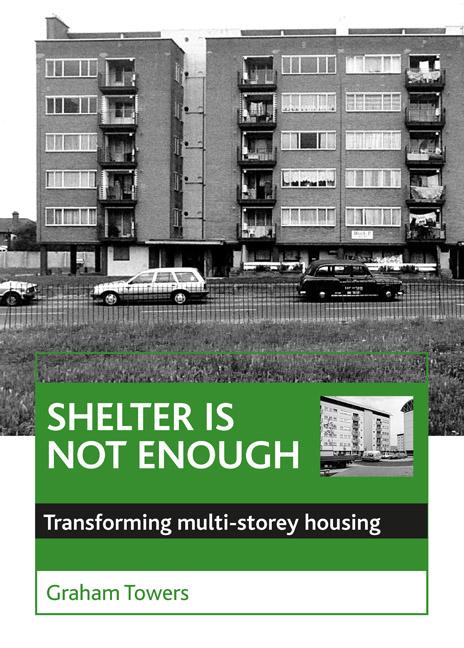Book contents
- Frontmatter
- Contents
- List of figures and tables
- Dedication
- Preface
- Foreword
- one Introduction
- two Forming the multi-storey legacy
- three Politics, economics and housing form
- four Social stigma and community action
- five Redeeming the estates
- six Facets of regeneration
- seven Building a model framework
- eight Prospects for transformation
- nine Ending the estate syndrome
- ten On broader horizons ...
- Bibliography
- Appendix: Case study research
- Index
- Frontmatter
- Contents
- List of figures and tables
- Dedication
- Preface
- Foreword
- one Introduction
- two Forming the multi-storey legacy
- three Politics, economics and housing form
- four Social stigma and community action
- five Redeeming the estates
- six Facets of regeneration
- seven Building a model framework
- eight Prospects for transformation
- nine Ending the estate syndrome
- ten On broader horizons ...
- Bibliography
- Appendix: Case study research
- Index
Summary
At the end of the 1960s I spent two years working as an assistant architect on a large high-density housing development in inner London. The designers were socially committed and set high aspirations for environmental quality. We believed that we were creating local authority housing to the highest standards. The complexity of the scheme made the work demanding and interesting. But it eventually became evident to me that we were working in a blinkered fashion, unaware of broader issues. No thought was ever given to the possibility of not demolishing everything – of preserving and rehabilitating some of the better quality Victorian buildings. The brief had been set at the beginning and it was never questioned. During the design work the partnerin-charge had some contact with the Borough Architect and the Chair of the Housing Committee, but in the entire time I worked on the project I never once met a representative of the client. Worse still, no member of the design team ever had the slightest contact with the tenants – either those who were to lose their homes or those who would occupy the new housing.
To try to redress these shortcomings, both in the process and in my own experience, I took a job as a community worker in a part of North Kensington which had already experienced considerable slum clearance and where much more was in prospect. I was to remain involved in community politics in the area for several years. During this time I learned the value of involving users in the design and development process – user participation can produce different solutions which work better. I also became aware of the shortcomings of multi-storey flats – the hardship caused when lifts or services fail in high blocks; the health problems suffered by families with young children; the disturbance and noise nuisance caused by inadequate design; the degradation caused by fouling and abuse of lifts, stairs and other common areas; the dangers caused by dumped rubbish; and the insecurity caused by assaults and burglaries. For several years I experienced these problems at first hand as a tenant in multi-storey housing.
- Type
- Chapter
- Information
- Shelter Is Not EnoughTransforming Multi-Storey Housing, pp. xi - xiiiPublisher: Bristol University PressPrint publication year: 2000



